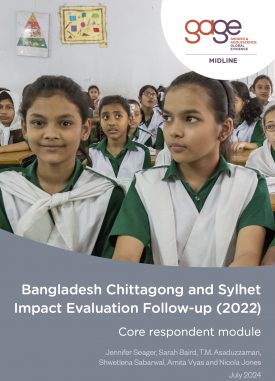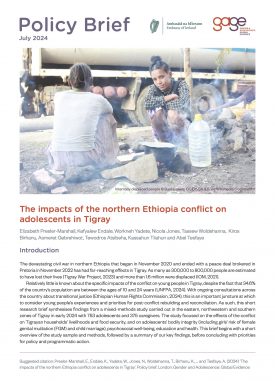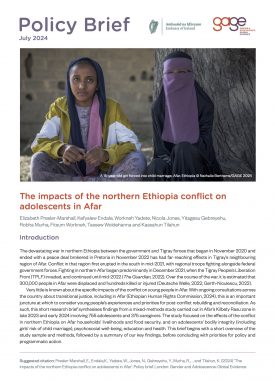The right to education is stipulated in the 2018 Global Compact on Refugees (UNHCR, 2018) setting out a vision for all stakeholders to work in unison to expand national educational systems and accommodate refugee and host community children and adolescents alike. This vision is further articulated in Refugee Education 2030: A Strategy for Refugee Inclusion and aligned with Sustainable Development Goal 4 calling for ‘inclusive and equitable quality education and promote lifelong learning opportunities for all’.
Education for adolescents in Cox’s Bazar, Bangladesh, however, is a serious concern. Approximately half of the Rohingya children living in the area had not participated in any form of learning prior to displacement from Myanmar and the recent influx has placed pressure on the fragile structures serving host community adolescents. Although the UN Convention on the Rights of the Child mandates the sacrosanct right to education, Rohingya refugees have been denied formal education. Children aged 4–14 receive informal learning via a tailor-made Learning Competency Framework curriculum developed by UNICEF and partners, delivered in more than 2,000 learning centres across the refugee camps. Many adolescents are not able to access learning, however, and the 2020 Joint Response Plan for the Rohingya crisis warns that ‘an alarming 83 percent of the [Rohingya] adolescents and youth aged 15-24 years old don’t have access to any educational or skills development activities’.
In Ukhia and Teknaf host communities, secondary and higher secondary school enrollment rates covering ages 12–18 are lower than national averages, with financial constraints constituting the most pronounced obstacles to both enrolling and completing secondary education. Moreover, the Rohingya influx has impacted the quality of education in host communities, due to the loss of teachers to higher remunerative opportunities in camps. As the crisis protracts, bridging these gaps will require long-term creative thinking.
Following negotiations to allow the Rohingya to start to access formal education, the second quarter of 2020 will see the introduction of the Myanmar curriculum on a pilot basis. Education partners will implement the curriculum, beginning with middle school grades 6–9, with the intent to reintegrate children and youth into Myanmar society once repatriation becomes possible. Acknowledging this welcome change, this brief synthesises findings on education and learning among Rohingya and host community adolescents from baseline research conducted by the Gender and Adolescence: Global Evidence (GAGE) programme prior to this policy shift. Our aim is to highlight the educational deprivations that many adolescents face, with a view to being able to assess the impact of the changes over time on adolescents’ education and broader well-being.
Suggested citation
Guglielmi, S., Jones, N., Muz, J., Baird, S., Mitu, K. and Ala Uddin, M. (2020) ‘“I don’t have any aspiration because I couldn’t study”: exploring the educational barriers facing adolescents in Cox’s Bazar.’ Policy Brief. London: Gender and Adolescence: Global Evidence. (https://www.gage.odi.org/publication/exploring-educational-barriers-facing-adolescents-coxs-bazar/)


